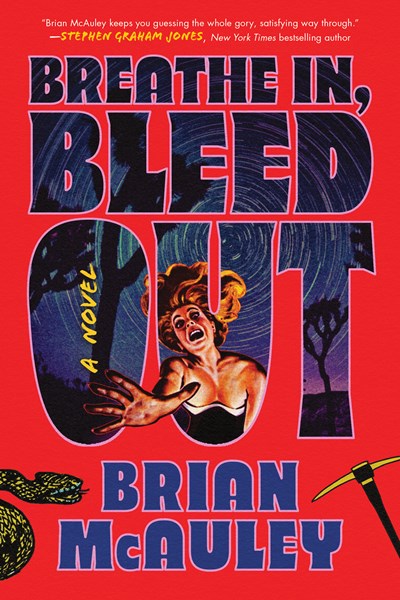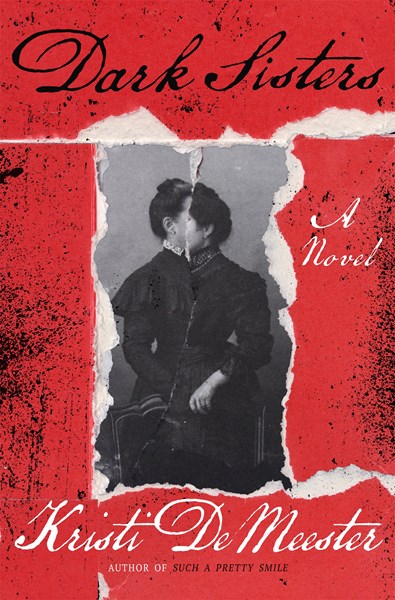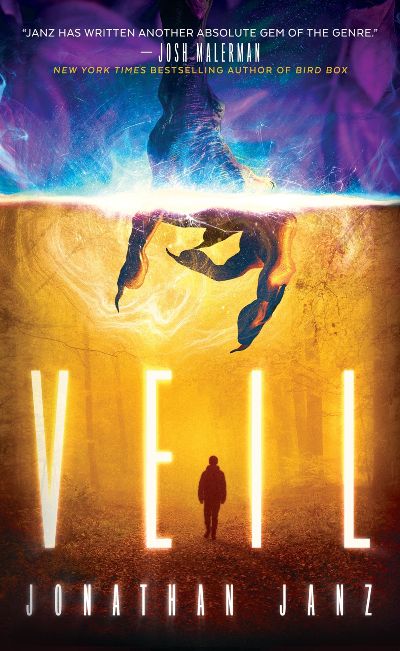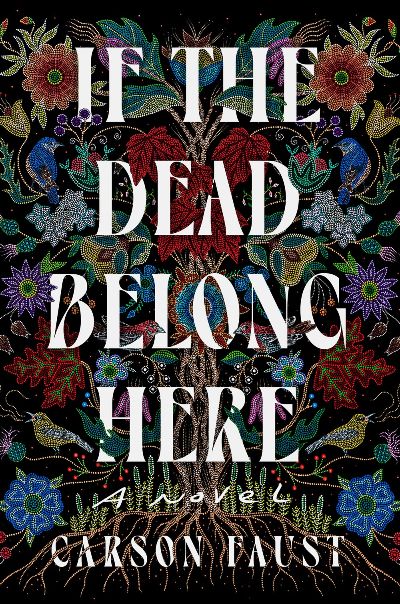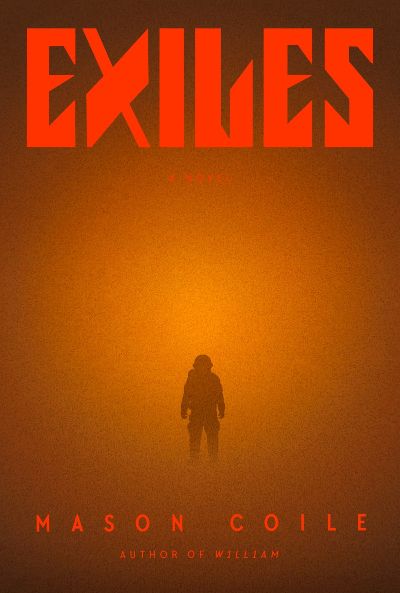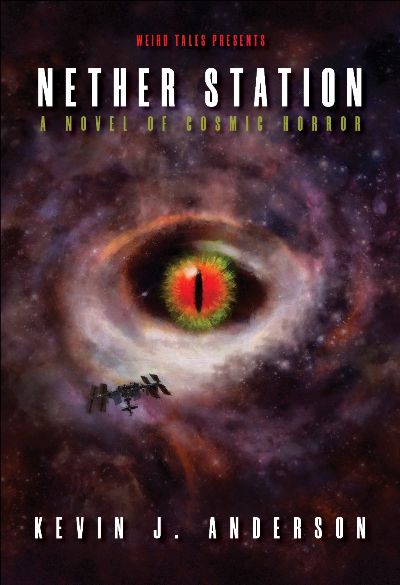qntm presents an organization nobody on the outside knows about. Those who work there are unsure from day to day what their role is and what they are facing. These brave people battle anomalies that could be hiding in plain sight and that cannot be comprehended; anyone who sees the anomalies will forget about them shortly after. When an evil being escapes from an organization’s containment unit, it escalates the paranoia to an unforeseen level. The being has the power to make you forget your job, colleagues, spouse, and even your short-term memory. It feeds on memories, and the organization tasked with stopping the entity, assuming its workers remember their roles, has a complicated battle ahead. What doesn’t need to be redacted for public safety is terrifying and surprising on multiple levels. The author does a terrific job laying out the organization’s story and the complex and challenging lives and battles its insiders face every day. Imagine a cross between Doctor Who’s Weeping Angels and John Carpenter’s The Thing and that will give you a general idea of the chaos and fun to come.
Horror
Maybe Hannah’s best friend Tess is right—a restorative yoga retreat in Joshua Tree might be what Hannah needs to let go of the images of her fiancé’s horrific death, right after he proposed to her in a stunning wilderness setting. On the women’s arrival in the desert, all seems idyllic—the sound bowls, Guru Pax in his flowing robes, the yurts and tech-free environment. But soon Hannah’s nightmares about Ben’s death are supplemented with visions of Waylon Barlow, an ancient miner with a flesh mask and a pick axe. The other retreat attendees, including Hannah’s high school ex-boyfriend Miles; tech-bro Jared and his ethereal partner, Luna; and Dennings, an ex-Marine, start to sense that something is off. Pax’s assistant, Kimi, assures them all is well—but then Dennings disappears. In superb Final Girl form, the retreat attendees get picked off one at a time, in entertainingly gruesome ways. As Hannah struggles to survive and save Tess, she has to confront her own secrets. Author McAuley, winner of Esquire’s Best Horror Book of 2022, Curse of the Reaper, demonstrates once again his flair for cinematic suspense with humor and splatter.
The small Southern town of Hawthorne Springs holds a dark and twisted history of witchcraft and sin, carried through generations of the women who live there. In this historical thriller, we meet three women whose fates, spanning hundreds of years, have been bound to the magic that flows from this town. Anne Bolton is a healer in 1750 fleeing with her daughter from persecution for witchcraft, placing her faith in a powerful natural entity and encouraging others to do the same. Mary Shepard is a housewife in 1953, entertaining a sapphic affair as an escape from her monotonous life in a restrictive community. Camilla Burson is the defiant daughter of a preacher in 2007, fighting against the community and the church to discover the truth behind the sinister and mysterious disease that plagues the women of Hawthorne Springs and how it connects to the Dark Sisters, a parable of two wayward women that may be all too real. Is there truly a source of magic in this town, or are the Dark Sisters simply a story preachers share to incite fear and keep women in their place? Visit three different time periods as DeMeester addresses generational trauma, cult-like religious practices, and the collective power of women who are willing to take down the patriarchy.
The disappearances seemed ordinary at first, with the police thinking those gone were runaways. Then more vanished, all at night, and curfews were implemented. John Calhoun, a teacher with a fractured family, has his son vanish after going around a corner. The wave continues, and the news and government have no answers. When John’s wife is taken in broad daylight by an invisible force that drags her away screaming, it’s clear that whatever is responsible won’t stop until every person on the planet is abducted. But who is responsible, and what is their motive? John and his 13-year-old daughter hunker down in their house and begin a survivalist lifestyle to avoid being next. At the same time, the neighborhood around them becomes a scene right out of the classic Twilight Zone episode The Monsters Are Due on Maple Street. Janz, the pseudonym of Craig Shaeffer, uses his background and influences growing up to craft a tense and twisty thriller. The surprises come later in the story when John is forced to fight back by making sacrifices to save his family and the motivations behind the disappearances come to light. Janz takes the quintessential theme of how far you would go to protect your family to clever and horrifying heights.
Between 1830 and 1850, the U.S. government’s forced displacement known as the Trail of Tears removed thousands of Native Americans from their ancestral lands in the Southeastern United States. But according to Native folklore, some Indigenous people evaded the Removal, sheltered by supernatural Little People. Faust’s atmospheric debut focuses on a family descended from those survivors and the generational trauma they have endured. When six-year-old Laurel Taylor vanishes from her Wisconsin home early one morning in 1996, her devastated mother, Ayita, believes her abusive ex-husband Barron kidnapped their daughter, even though Barron had abandoned the family before Ayita realized she was pregnant. But as weeks pass by and Laurel remains missing, Nadine, her older sister, begins experiencing nightmares and hearing whispers, especially in the tree house where Laurel always played. Have the Little People taken Lauren or are other family ghosts responsible? To find answers, Nadine travels with her Aunt Rosebud to South Carolina, where her fractured family has deep roots. Faust, an enrolled member of the Edisto Natchez-Kusso Tribe of South Carolina, draws on his family history and Indigenous mythology to weave a haunting tale of loss and redemption that may remind some readers of Keith Donohue’s The Stolen Child with a touch of Poltergeist.
Agatha Christie’s 1939 And There Were None set the template for the island mystery with its protagonists trapped on a remote isle and stalked by an unknown killer. The arrival of cell phone technology has forced writers to up their thriller game. As with the guests in Sean Doolittle’s Device Free Weekend, the five girlfriends who arrive at Baltic Vinyasa on Isle Blind off the Swedish coast for a four-day yoga-themed bachelorette party must give up their cell phones and other digital devices to the proprietor, Irene. “I wish I wasn’t so addicted to my devices,” confesses Lena. Her sister Tessa, the bride-to-be’s best friend, has another, more secret, motive for joining the party. A true-crime podcaster whose latest episode crashed and burned in the wake of a scandal, she hopes to redeem her career by solving the mystery of the Nacka Four. A decade earlier, four young women, who had traveled to the archipelago for their annual reunion, disappeared, presumed by police to have drowned when their boat was found floating. Tessa suspects they may have been murdered on Isle Blind and is determined to find evidence. But from the moment she steps on the island, her sense of dread grows. While elements of this twisty mystery require a suspension of disbelief (the luxurious hotel is built on a rocky island too barren to support crops yet has plenty of water for hot showers), Sten (The Resting Place) excels at building the creepy horror and chilling tension. Readers who like their thrillers bloody and gory will enjoy this dark Nordic take.
In the middle of the night, an airline pilot receives a frantic call from his mother, begging him not to fly in the morning. He is not the only one to receive a call from their mom, all with the same request. In some cases, their mother has been dead for some time. In a tiny town in Maine, a high-school girl named Charlie follows an odd-looking weather balloon to the remains of a military crash from the 1960s, and the pilot was her great-grandfather. The landing of a mysterious aircraft at an abandoned military base ties into a top-secret project of a scientist named Marty, who discovers a unique way to hide planes from radar. Add in the escalation of a mission to drop a nuclear bomb on Cuba at the height of the Cuban Missile Crisis. All of these random factors convene in this engaging and baffling thriller. The storyline alternates between Marty’s scientific research during the Kennedy administration and the present, when Charlie and another student search for answers. Carson, a pseudonym for Michael Koryta, delivers a terrific blend of horror and espionage that could be frighteningly real.
Coile, who also writes as Andrew Pyper, passed away in early January, and this tense and terrific novel is sadly his last. A crew of three—two men and one woman—is sent to Mars to coordinate the eventual habitation of the red planet. Machines were sent earlier to create the base where they will live out the remainder of their lives, but the crew arrives at Mars to find no response to their signal. A bumpy ride to the surface and changed lock codes reveal a strange scenario. The robots built the habitat but were attacked by a being with stealth abilities and super strength, and the description sounds like an insect if it had one giant claw and could walk on two legs. As the crew listens to the machines tell their story, it appears that not all is as it seems, and the robots might be homesick for Earth, which would be entirely against their programming. This mix of horror, isolation, and psychological suspense demands to be read in one sitting and forces the reader to ask provocative questions with answers that have profound implications, such as, “What constitutes sentience?” and “What is the price humanity is willing to pay to reach the stars?” Exiles would make a fantastic movie, and fans of Alien or Mary Doria Russell’s The Sparrow should consider going on this journey.
Mailman Hank Davies lives in the small town of Bethlam, Nevada, and delivers to the same people every day. It’s predictable and consistent. One morning, he accidentally trips over a tree branch, and one of the envelopes opens, and he can see the letter inside. The page is blank. He secretly opens a couple more letters, which are also blank. When he talks to his wife, Iris, about the mystery, she shrugs it off and reminds him he needs to take better care of himself and not stress over trivial things. After Hank’s accident, his doctor warns him to take things easy. As Hank begins questioning his life and memories, a neighbor comes by in the middle of the night and says, “You can’t trust them. They mean you harm.” This cryptic message sends Hank on a perilous journey, questioning everything and everyone in his life. But if he learns the truth, it won’t set him free: It will destroy him. Bassoff weaves a tale that mixes Ira Levin with the best horror films, where you want to yell at the screen to warn a character of what is about to happen. This novel is an atypical chain, in which the more the story twists, the tighter the chain becomes instead of unwinding. Readers will not be able to put this book down until they learn the mystery behind the façade.
Space exploration and the curious pursuit of knowledge might sometimes be the wrong decisions. A wormhole has been discovered in the vast end of our solar system, and after numerous probes only add to the questions, a team of astronauts heads to the region. They take turns monitoring the systems for six months while the others slumber in cryogenic sleep. The wormhole appears stable, and when a probe starts transmitting a signal over four years later from our nearest star system, the hope is to make this a way station for travel between the two galaxies. The six-year journey to the portal is tense and chaotic for the group, but the problems are merely beginning once they arrive, and what they discover will change everything they understand. For Dr. Cammie Skoura, a scientific genius who lacks an understanding of social norms, this mission must succeed, no matter the cost. Anderson has created a compelling story with a great cast of characters. The tension builds as the truth emerges, and as the team tries to cope with the ramifications of its discovery, things become more terrifying. Both thriller and SF fans will want to go on this journey.
- 1
- 2


